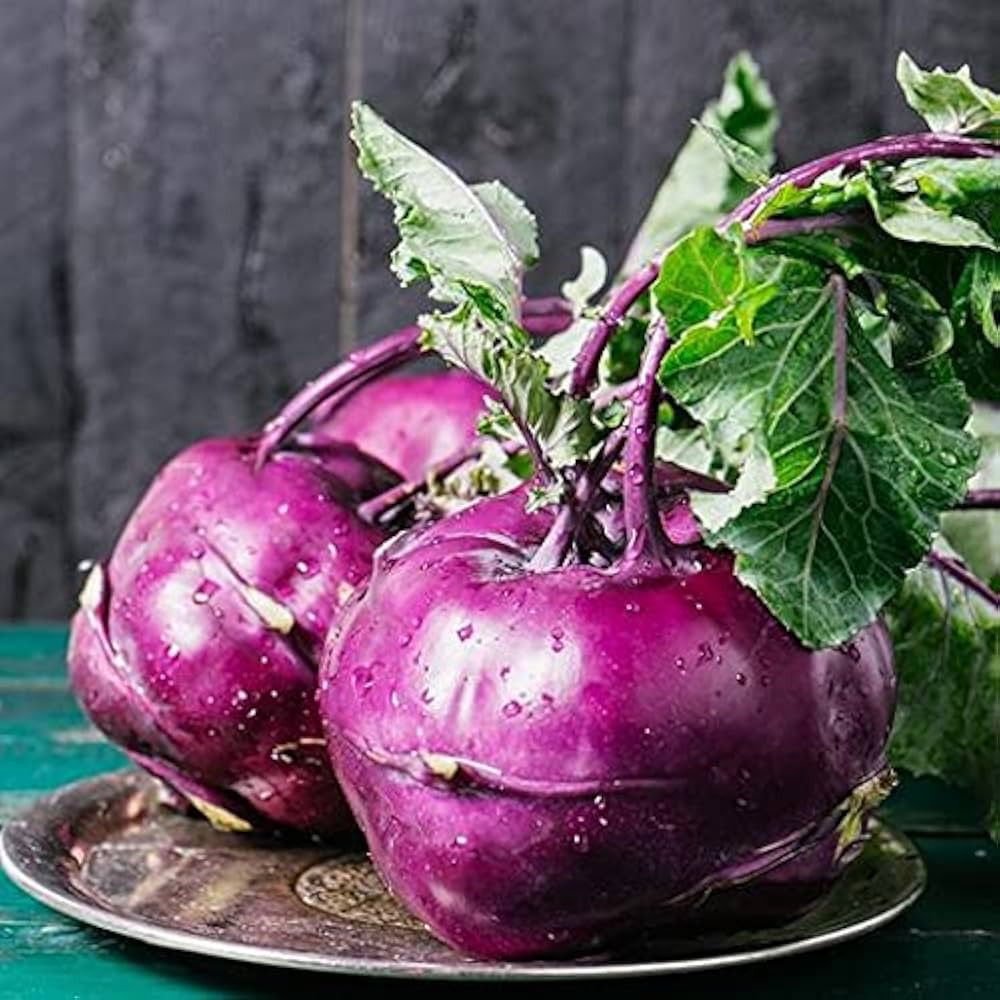Purple kohlrabi vegetable Brassica oleracea seeds for planting in organic kitchen garden or backyard beds
Couldn't load pickup availability
Description
Certified Organic Purple Kohlrabi Seeds
Characteristics and Uses of Purple Kohlrabi Plants
Purple Kohlrabi is a vibrant, nutrient-rich vegetable known for its crisp texture and sweet, mild flavor. Popular in stir-fries, salads, and slaws, this bulbous veggie offers both visual appeal and culinary versatility. Sourced from bijaseeds, a big, trusted name in the USA seed market with a vast, high-quality selection, these organic vegetable seeds meet certified organic standards and deliver delicious, non-GMO harvests.
Growing Conditions for Purple Kohlrabi Plants
- Light Requirements: Full sun
- Soil Type: Loamy, fertile soil with good drainage
- Temperature: Thrives in 50–75°F
- Humidity: Low to moderate
Planting Tips for Purple Kohlrabi
- Sow seeds directly into the ground in early spring or fall.
- Plant ¼ inch deep and space 4–6 inches apart.
- Thin seedlings to prevent overcrowding.
Watering Instructions and Tips
- Water regularly to keep the soil evenly moist.
- Avoid drought stress to prevent woody bulbs.
- Apply mulch to retain soil moisture.
Growing Zones
- USDA Zones: 3-10
- Global Zones: Cool-season climates preferred
Key Benefits & Uses
- Rich in fiber, vitamins C and B6
- Versatile in raw and cooked dishes
- Non-GMO seeds with certified organic origin
Best Uses in the Garden & Landscape
- Vegetable beds and raised gardens
- Cool-season crop rotations
- Companion planting with leafy greens
Conclusion
Certified Organic Purple Kohlrabi Seeds combine nutrition, beauty, and performance. Grow a crisp, delicious crop with bijaseeds—a big, trusted name in the seed world, offering a wide range of high-quality, non-GMO varieties to gardeners everywhere.
FAQ
When should I plant purple kohlrabi?
Plant in early spring or late summer for the best cool-season yields.
Can I eat the leaves?
Yes, the leaves are edible and nutritious—great in soups and sautés.
How do I know when it's ready to harvest?
Harvest when the bulb reaches 2–3 inches in diameter for the best texture and taste.







